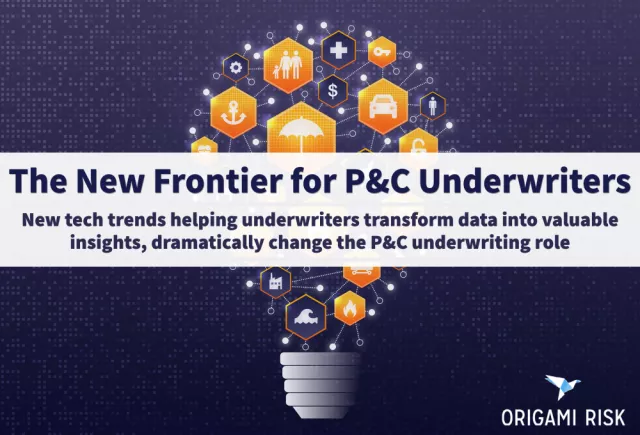Data is at the heart of the insurance business. It is also a critical component in the process of underwriting and insuring risks. Three new tech trends including artificial intelligence (AI), machine learning (ML), and predictive analytics are now laser-focused on helping underwriters turn all that data they have collected into valuable, actional insights. This, in turn, is dramatically changing the role of the underwriter.
Driving this new tech trend is the maturity of cloud processing and computing power. Collecting, filtering, and categorizing data quickly and accurately is now possible. This includes historical data as well as data that insurers now collect from the move to online interactions with insureds. In addition, data analytics allow underwriters to collect and mine data from both internal and external sources, social media, and the Internet of Things (IoT) — telematics, equipment, smart sensors, appliances, and cars.
In 2022, more than 2.5 quintillion bytes of data1 were created every day. The amount of data collected is enormous and increasing exponentially. It is impossible for any insurer or underwriter to analyze all the data already collected, let alone what they collect daily.
Data: The New Oil
Many now consider data the new oil. Like oil, data needs to be collected, processed, analyzed and made accessible. In 2022, PwC2 released its 4th annual Business Survey on US insurers’ use of AI and data analytic tools such as ML and predictive analytics: “AI success is becoming the rule, not the exception. Instead of focusing on one goal and then moving to the next, insurers are advancing with AI in three areas at once: business transformation, enhanced decision-making, and modernized systems and processes.”
New Way of Looking at Insurance Risk
No longer buried in unproductive tasks such as manually compiling information from disparate sources or interfacing with multiple systems, the underwriting role is changing. Underwriters no longer need to focus on traditional underwriting activities such as data collection, risk estimation, price quotes, and policy issuance. Instead, they are now able to focus more on complex, high-value risks that require experience and professional underwriting judgment including monitoring an insurer’s overall profitability and strength of business portfolios. They will also be asked to interpret, communicate, and defend underwriting decisions, including automated decisions, with multiple stakeholders while working closely with insurer leadership on strategic initiatives. Underwriters are being empowered to take on a more strategic role. One that will impact the entire ecosystem of insurers, employees, and insureds.
Another important factor affecting the underwriting role is that insurance itself is moving from a transactional business to creating a longer-term customer journey. As per Salesforce’s 6th “State of Marketing,” report 3, “84% of consumers say the experience a company provides customers is as important as its products or services.”
Adding further to the complex issues affecting underwriters is that historical data is no longer capable of helping underwrite newly emerging risks such as climate change and cyber. What is needed now is a new way of looking at risk.
The Geneva Association’s “Big Data and Insurance”4 report says, “Both incumbents and newcomers are developing insurance products that use large amounts of data to assess, select, price, predict, and prevent risks that in some cases were previously considered uninsurable. These new technologies allow for the development of powerful new business models which in turn enable the role of underwriting to evolve from ‘understand and protect’ towards ‘predict and prevent.’”
The goal of the new tech is to offer underwriters more opportunities to broaden the value they deliver, to better understand the businesses they are underwriting, and to monitor the risks facing their insureds in real-time. In many ways, the new frontier is already here. Underwriters are moving into new roles that include increased interaction with clients, advising about preventive measures to lower insurance costs, analyzing insurance lines of business, and creating new customer experiences that go beyond “what happened and why” to leveraging data and knowledge about “what might happen next” and helping their clients mitigate the complicated risk landscape they face today.


